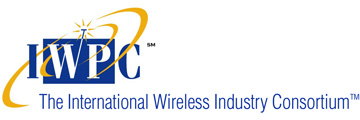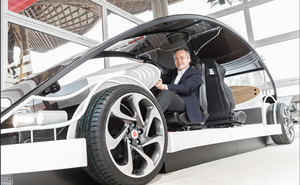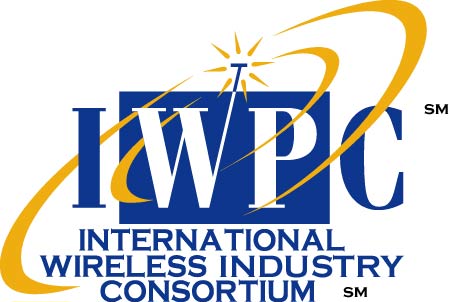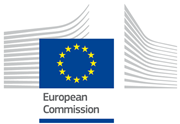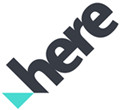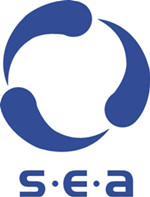Connected Cars, V2X & Autonomous Vehicles
Exploring global opportunities, challenges and trade-offs
for mobile connectivity systems (IEEE 802.11P (DSRC)
3GPP LTE R14, 5G)
Hosted by:
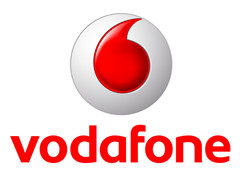
When
April 24-26, 2017
Introduction
Connected vehicle technology is rapidly evolving to include Vehicle-to-Vehicle (V2V), Vehicle-to-Infrastructure (V2I), Vehicle-to-Device (V2D), and Vehicle-to-Pedestrian (V2P) signaling and communications.
In addition, integration with non-automotive vertical
applications and services may be realized through various Vehicle-to-Home (V2H), Vehicle-to-Device (V2D), and Vehicle-to-Grid (V2G) solutions. This workshop will bring together industry leaders and technology innovators from across the Wireless and Automotive ecosystems to discuss and debate market and technology drivers and wireless connectivity standards and choices
Workshop Goals
- Share information on status and trends regarding connected vehicles (V2V, V2X), wireless services and use-cases.
- Review the present state and novel developments in vehicle connectivity, service models and technology enablers.
- Discuss and debate technologies and activities which may impact the connected vehicle market (e.g. semiconductor and antenna technology, signal processing, fusion, functional safety, frequency allocation, etc.).
- Create an open forum for the global automotive and wireless community to discuss requirements, technological opportunities, challenges, limitations, and trade-offs for/of V2V and V2X technology.
Agenda
|
DAY 1 Monday 14:00 |
Tour Registration |
Bus to depart from Hotel for Tour at 14:30 |
||||||||||||
| 15:00 |
Tour of Vodafone Innovation Park - limited spaces
** SOLD OUT ** |
Registration at hotel. Limited to 25 persons, first come, first served!
|
||||||||||||
| 19:00 |
Evening reception |
Registration at hotel |
||||||||||||
|
DAY 2 Tuesday 07:00
|
Coffee and Registration |
Hotel
|
||||||||||||
|
08:00 |
Welcome and Introductions
|
|
||||||||||||
|
09:00 |
Host Keynote
|
Keynote Presentations
CTO Vodafone Germany
Chief Innovation Architect, Vodafone Germany
|
||||||||||||
|
10:00 |
Networking Break |
|
||||||||||||
10:40 |
Service Provider Perspectives
|
Roadmap for the Introduction of LTE-V2X
CTO, Connected Car
Initial Views on Connectivity Design Framework for Automotive Applications
Senior Researcher
Push for Safe Mobility in Hong Kong
AVP, Strategic Technology & Projects
|
||||||||||||
|
12:40 |
Networking Lunch |
|
||||||||||||
|
13:40 |
Automotive OEMs
|
Ford and the Connected Vehicle
Electrical & Electronic Systems Engineering Europe
|
||||||||||||
|
14:20 |
Global Industry Collaboration
|
5GAA Overview and WI Status
Director for Industry Communications
|
||||||||||||
|
15:00 |
Networking Break |
|
||||||||||||
|
15:40 |
Regulatory Perspectives
|
European Activity in Vehicular Connectivity
Programme Officer
Activities in CEPT (European Spectrum Regulation) with regard to connected cars evolving towards autonomous vehicles
European Communications Office Spectrum Management
V2X – Opportunities and Challenges from an Infrastructure Perspective
Federal Highway Research Institute
Broadband Networks Policy for Safe Transportation and Innovative Services
Director, CEE
|
||||||||||||
17:40 |
End of Day Panel
|
|
||||||||||||
|
18:30 |
Adjourn for Day |
|
||||||||||||
|
19:30 |
Networking Dinner - Brauerei Zum Schiffchen |
Bus transportation provided to/from hotel/restaurant |
||||||||||||
|
DAY 3 Wednesday 07:00
|
Coffee and Registration |
|||||||||||||
|
08:00 |
Wireless OEM Perspectives
|
Cellular Vehicle Connectivity
Senior System Engineer
Vehicle Platooning Performance over Cellular Networks
Senior Researcher/Connected Vehicle Communications
|
||||||||||||
|
09:20 |
Automotive Technology Enablers
|
Compelling Use-Cases for V2X
Head of Industry Relations
|
||||||||||||
|
10:00 |
Networking Break |
|
||||||||||||
|
10:40 |
Future Architectures for Connected and Highly Automated Driving
|
LTE Capabilities for Advanced V2X
Lead Architect Car2X Use Cases & Solutions
V2X and its relationship to big data and smart cities
Director, Technology
Bringing SDN/NFV To The Mobile Access For Autonomous Vehicle Applications
Chief Architect
|
||||||||||||
|
12:40 |
Networking Lunch |
|
||||||||||||
|
13:40 |
Wireless Technology Enablers
|
C-V2X Technology and Evolution
Senior Manager
Challenges and Roadmap in light of 5G standardization
Head of Operations and Delivery
The Practical Aspects of V2V
CTO
|
||||||||||||
|
15:40 |
Networking Break |
|
||||||||||||
|
16:10 |
Validation and Certification Challenges
|
Evolving your V2X Test for the Connected Car
Director, Global Automotive Initiative
CEO
Convergence of Telecom and Automotive Industry
Technology Manager
|
||||||||||||
17:20 |
End of Day Panel |
Key Take-Aways, Closing Remarks and Actions
Host and invited Carriers and Auto OEMs |
||||||||||||
| 18:00 | Adjourn | |||||||||||||
|
Dinner (Dutch*) * = in this context, Dutch is a term which means that each person will be responsible for their own dinner costs. |
For those who desire to join us, we get together to enjoy good friends, good food and good wine. |
FAQs
- What is the deadline for presentation/handout materials?
- What can I do to prepare for speaking an at IWPC workshop?
- Who are the attendees?
- What are the costs/registrations fees?
- Hotel information?
- What are the travel options from the airport to the hotel?
- Are there any audiovisual requirements?
- Will business cards be collected?
- What is the dress code?
- How will handout materials be provided?
- What is the deadline for
presentation/handout materials?
Deadline for electronic version of presentation/handout materials: Friday, April 14, 2017
- What can I do to prepare for speaking an at IWPC workshop?
Click on the link below for a short video guide regarding preparing for and improving your IWPC presentation:
- Who are the attendees?
- We do not permit the Press.
- We do not permit Analysts.
- We do not permit Consultants.
- We do not permit 3rd party sales reps.
- We only permit "first hand knowledge experts" in business and technology issues, prepared to contribute to the discussion.
- What are the costs/registrations fees?
ALL Hosts, Speakers, Panel Members and Attendees will be asked to cover out-of-pocket workshop costs such as conference room costs, food (Social Reception plus First Day breakfast/lunch/dinner plus Second Day breakfast/lunch plus Breaks), audio/visual costs, etc.
These costs will be $998 (USD) per person. (For IWPC Members only.)
ALL Hosts, Speakers, Panel Members and Attendees will be asked to pay this fee in advance with either Visa, MasterCard, American Express, cash, personal check or business check. Make checks payable to IWPC.
- Hotel information?
NH Dusseldorf City Nord
Münsterstraße 232-238
40470 Düsseldorf, Germany
Phone: +49 211 2394860
Hotel WebsiteThe IWPC room block rate is 139 Euros.
The cut-off date for reservations is Monday, March 27, 2017. After that date, rooms cannot be guaranteed at the IWPC rate.
Send reservations requests to: [email protected] and mention IWPC room block.
- What are the travel options from the airport to the hotel?
Directions and transportation options will be posted as soon as possible.
- Are there any audiovisual requirements?
A Computer Projector will be available for the speakers.
In addition, we audiotape all presentations and the interactive discussions. Post workshop, presentations are made available to IWPC Members on the IWPC WEB site, along with “recordings” of all presentations and panel sessions.
- Will business cards be collected?
Business cards will be collected at the door from all attendees. We will make copies of these cards, which will be available to all who provided a business card.
- What is the dress code?
Business casual suggested. No ties, please!
- How will handout materials be provided?
For ALL IWPC members:
All IWPC members are invited to submit materials to be included in the online workshop folder in the IWPC Research Library. This should NOT BE SALES MATERIALS. Rather, we suggest it contain technical information about your technology as it relates to the workshop topics.
For all companies who will be making a presentation at the Workshop:
You are invited to submit an advance copy of your presentation, complete with graphics and illustrations.
These materials will be included on the IWPC website Research Library.
Please submit these materials either by email, as a Word for Windows file, Power Point files or PDF files.
- Go to www.iwpc.org
- Click on IWPC Activities Tab
- Under Workshop: Connected Cars, V2X & Autonomous Vehicles
- Click on Submit Presentation Proposal. Complete the form and attach your presentation.
- Once we receive your presentation we will send an email confirmation.
AS BACKUP, PLEASE BRING AN ELECTRONIC COPY USB STICK WITH YOU!
